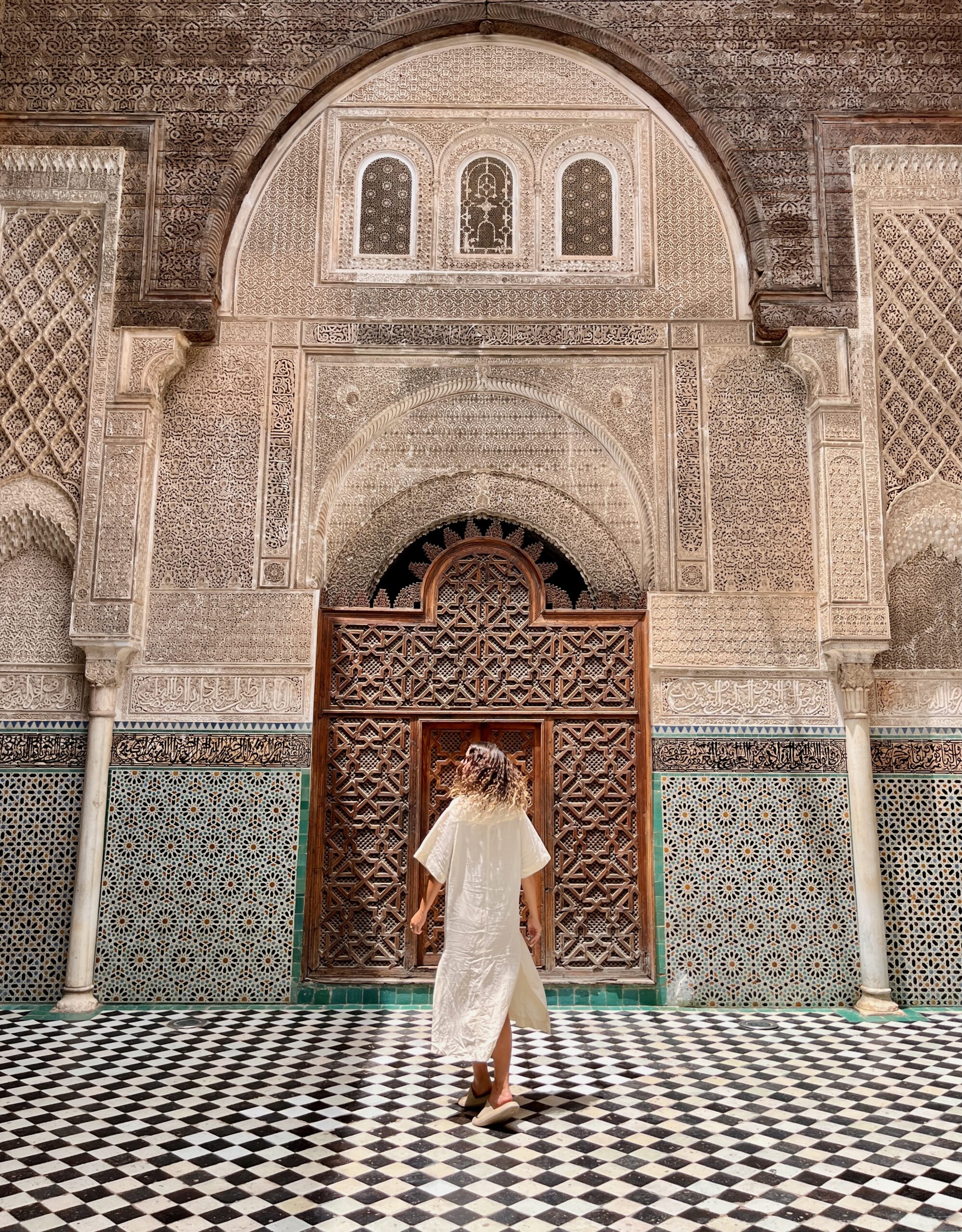Morocco has a rich history and breathtaking landscapes, it is a must-see when visiting the Maghreb region. I’ve had the pleasure of traveling to Morocco on two occasions, covering the country from North to South. I designed this road trip itinerary through its most idyllic destinations, from Marrakech to Fes. It can be completed in as little as one week but, if you wish to extend your stay in Morocco, more stops are suggested at the end of the article.
This itinerary of Morocco covers classic destinations as well as surprising sites off the beaten path. If you know me, you know I love authenticity and connection. I am not afraid of a little adventure and love to learn about culture and history!
This itinerary of Morocco will let you to explore idyllic towns, bask in beautiful nature, while allowing for plenty of rest. It covers big cities, such as Rabat and Fes, mountain villages such as Chefchaouen, but also lesser-known places in the desert.
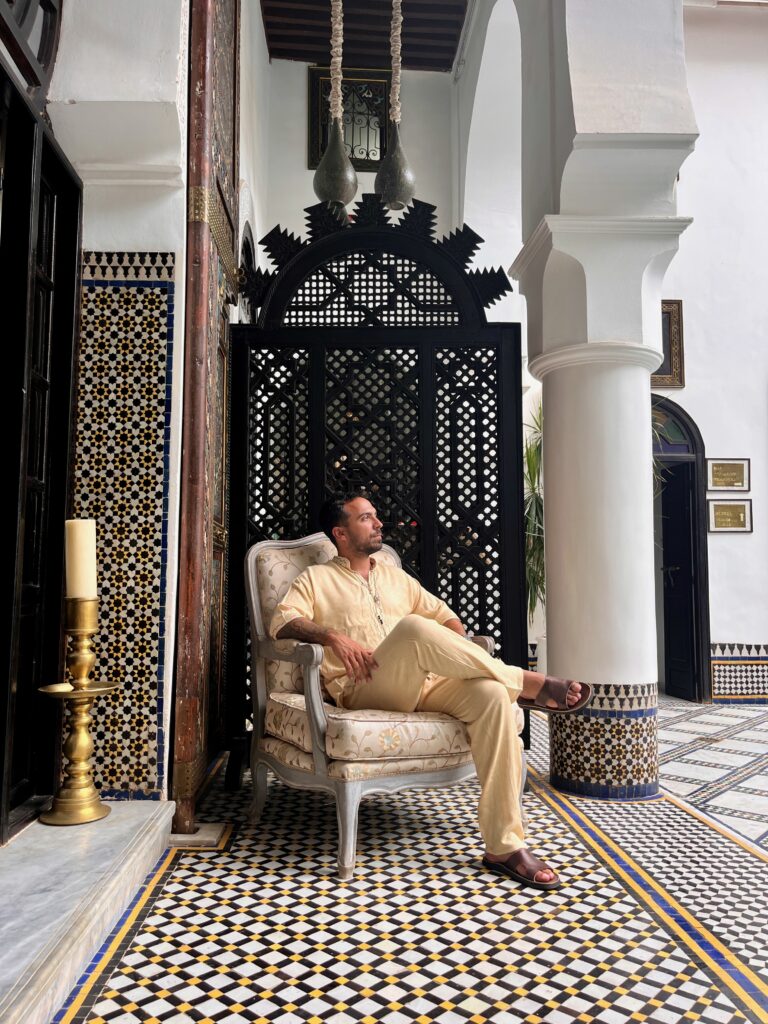
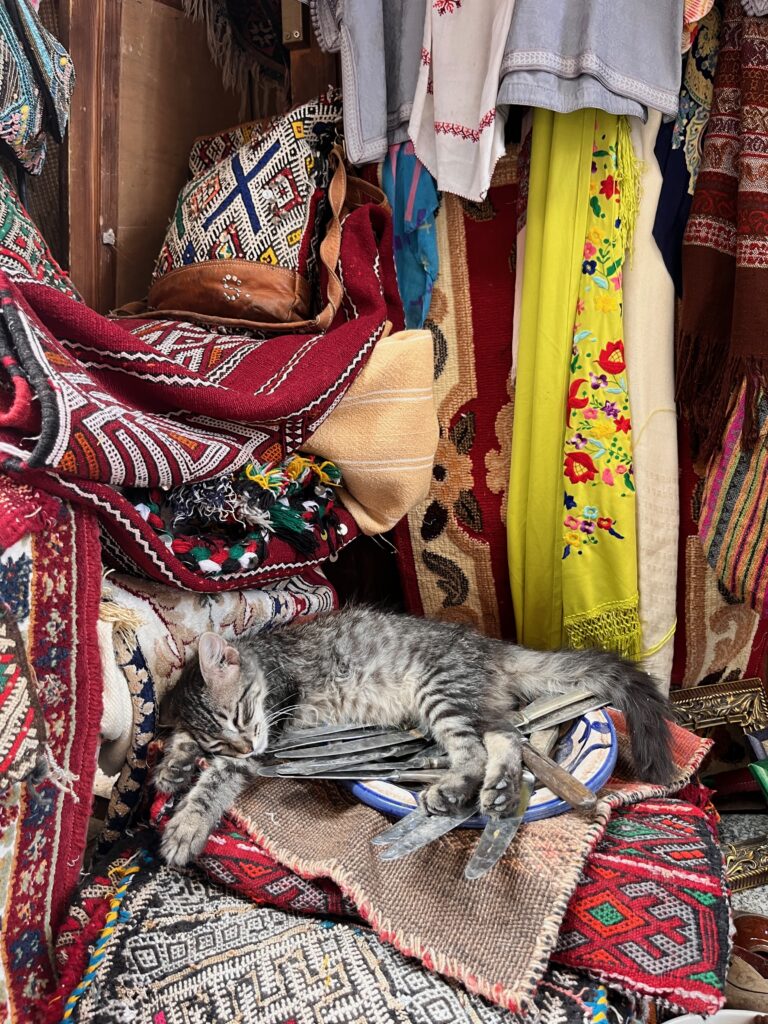
We decided to rent a car because we wanted to move around freely during our road trip. It is, however, perfectly possible and comfortable to move around via private transportation, which I recommend to book directly with the hotels at which you’re staying. For more tips on how to move around Morocco safely, click here.
In the itinerary below, I only mention the visits, restaurants, and hotels which I genuinely enjoyed and thought were worth sharing. This way, you get only quality recommendations. None of them are based on partnership and I paid for everything myself. If this sounds like a guide you’d follow, keep reading to discover the best of Morocco!
…wanna get started in the right mood? Check out my playlist below!
1. Marrakech
Marrakech is Morocco’s most iconic city. It offers a dynamic atmosphere with bustling souks, historic palaces, and lush gardens. The city’s rich cultural scene is evident in its lively markets and traditional music, making Marrakech a must-visit destination for those seeking an authentic Moroccan experience. Being a renowned touristic destination, it is also prone to scams (always ask your hosts for advice! see my tips here), but it also has the most vibrant night scene in the country (Theatro is said to be the best night club in North Africa) and luxurious hotels and day clubs such as Nikki Beach.
At the heart of Marrakech lies the famous Jemaa el-Fnaa square, a bustling hub of activity with street performers, food stalls, and local artisans. Nearby, the Bahia Palace and Saadian Tombs showcase the city’s architectural splendor and historical significance. For a touch of tranquility, visitors can explore the enchanting Majorelle Garden, once owned by Yves Saint Laurent. Art enthusiasts should visit the Marrakech Museum, housed in a stunning palace, featuring Moroccan art and artifacts. To complete the experience, indulge in a stay at a traditional riad, where the charm of Moroccan hospitality comes to life. I can recommend Riad BE and Riad le Clos des Arts inside the medina for a stay at the heart of Marrakesh, as well as Habitas Agafay for a unique nomad experience in the nearby desert.
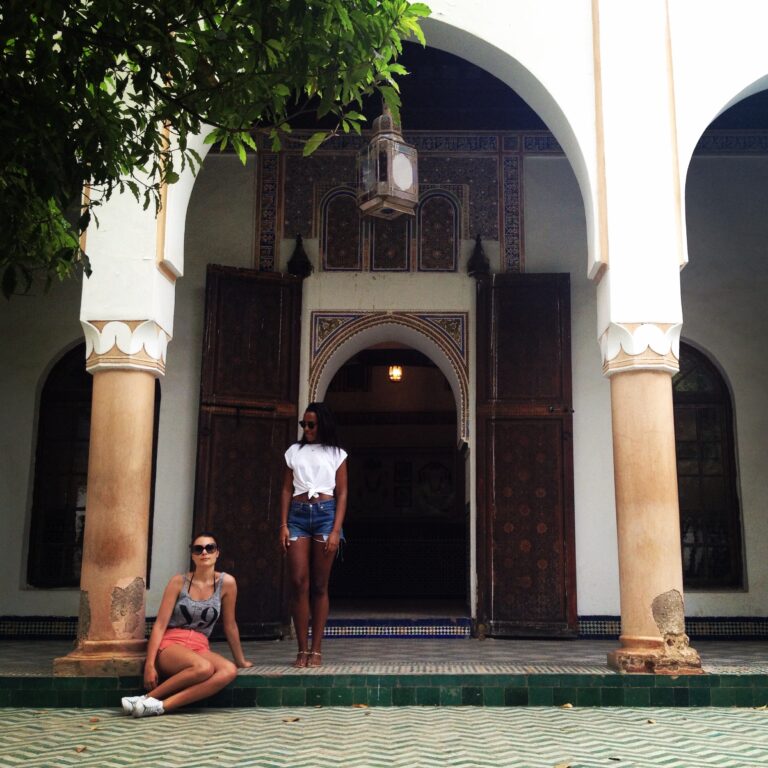
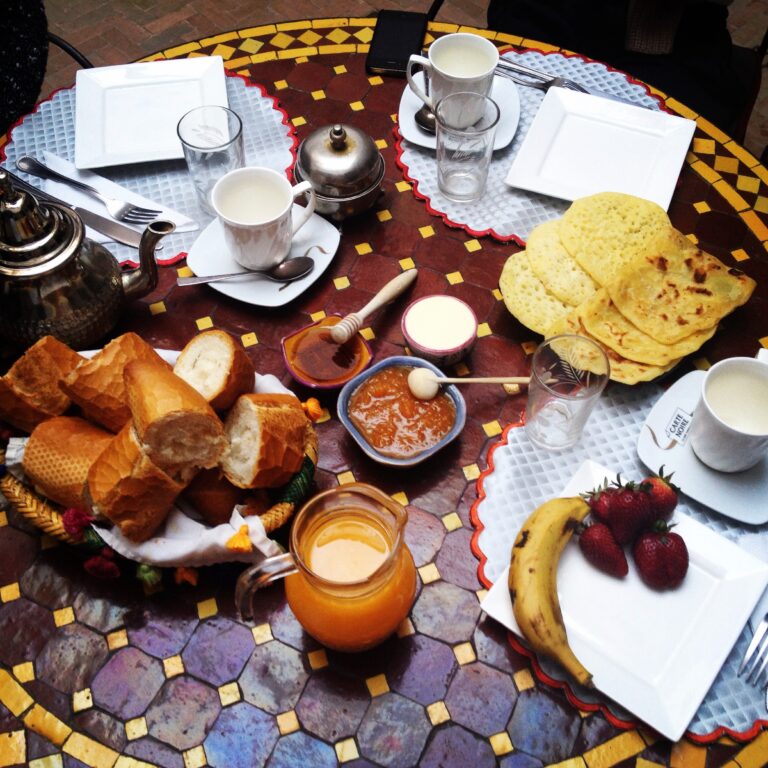
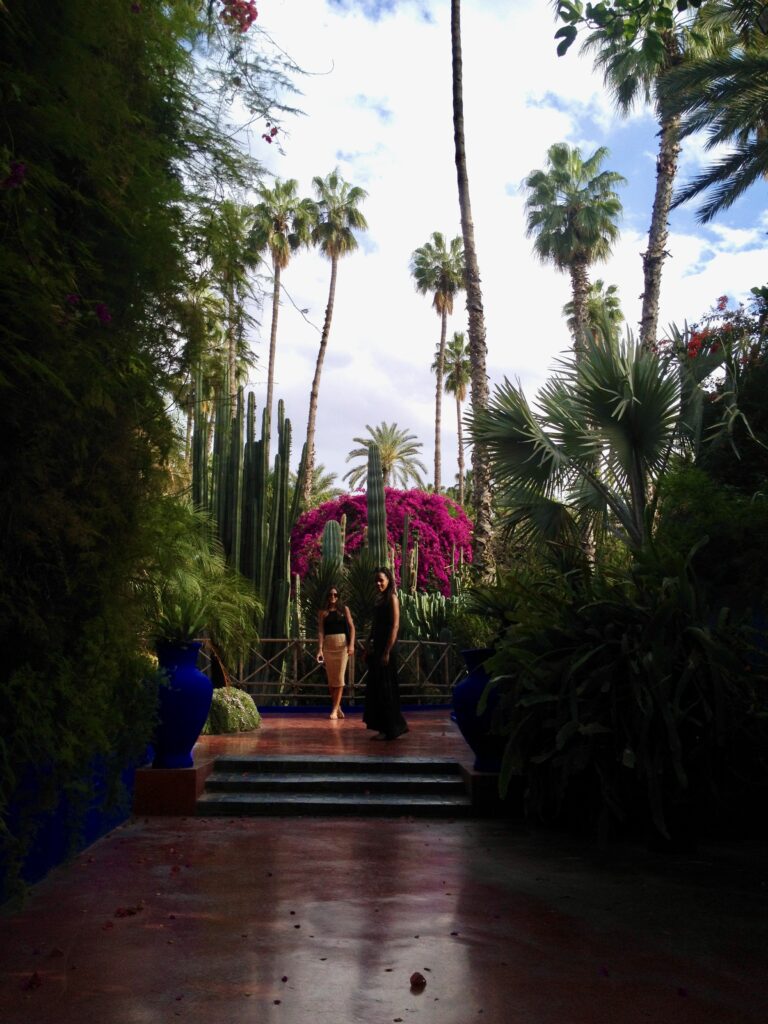
2. Casablanca
Casablanca, Morocco’s largest city, is a vibrant metropolis that blends modernity with tradition. Known as the economic and business hub of the country, it boasts a dynamic atmosphere with bustling streets, contemporary architecture, and a rich cultural scene. We did not get the chance to spend time there on our road trip, but it’s a great place to get a taste of modern Moroccan life.
At the heart of Casablanca stands the magnificent Hassan II Mosque, one of the largest mosques in the world. The Habous Quarter, or New Medina, is another highlight, where you can explore charming streets filled with artisanal shops, traditional bakeries, and vibrant markets. Art lovers should not miss the Villa des Arts, a contemporary art museum set in a stunning Art Deco building, showcasing works by Moroccan and international artists. For a unique local experience, visit Rick’s Café, inspired by the classic movie “Casablanca,” where you can enjoy live music and a nostalgic ambiance.
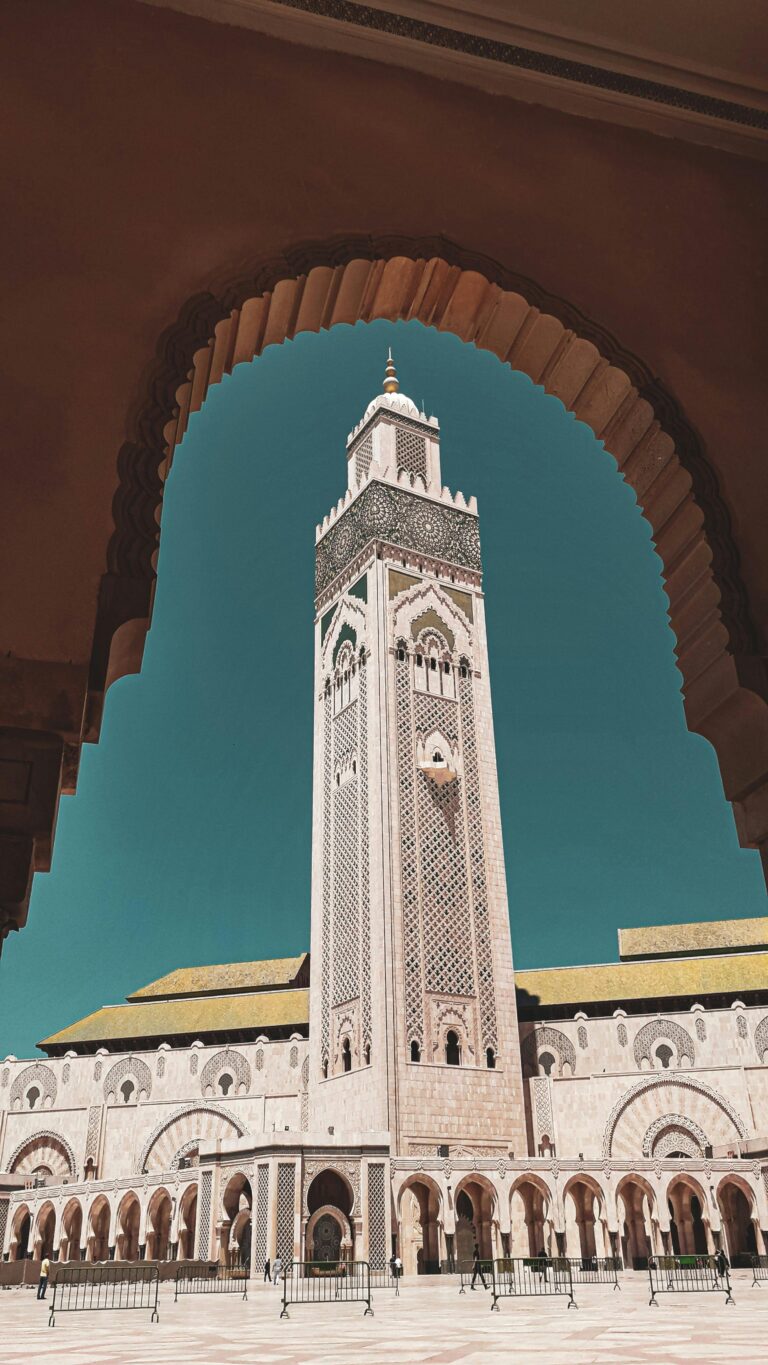
3. Rabat and Salé
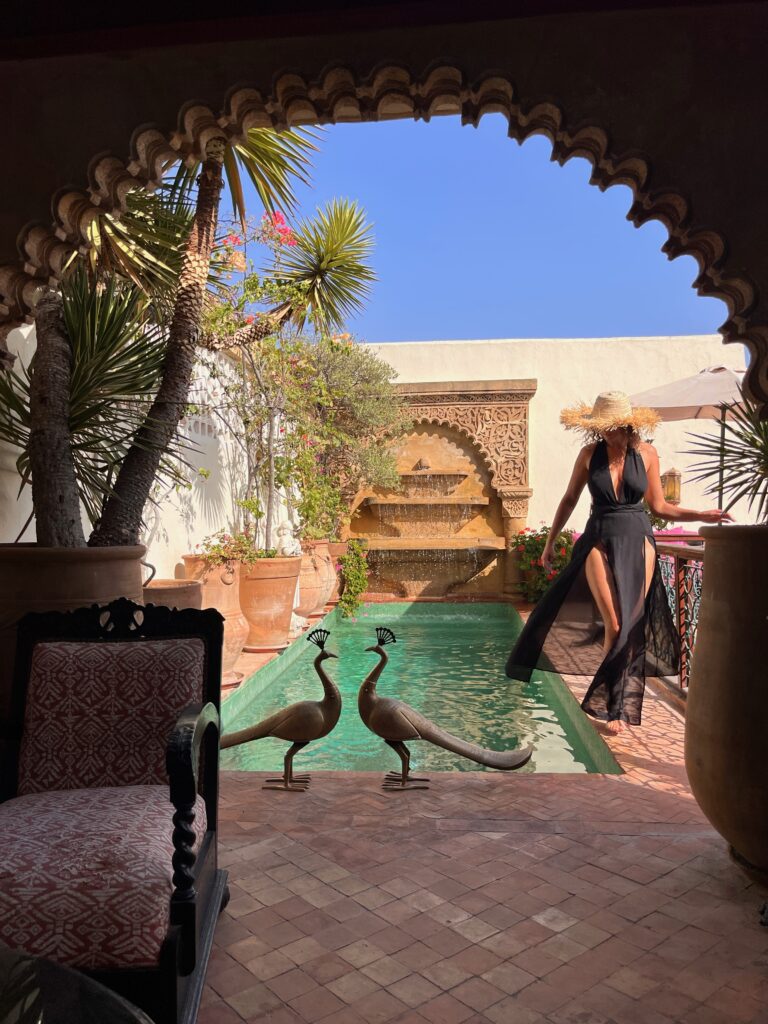
We stayed in a beautiful family-owned boutique hotel in the heart of Salé, which is right outside the city centre of Rabat. It has a historical medina of its own, more quiet than the capital city of Rabat, but just a few minutes away from the city centre, accessible by public transport such as buses and tramways. Rabat being the administrative capital of Morocco, its infrastructure is the best we encountered in the country.
The hotel where we stayed is Riad Thamayna. This was by far the best surprise of the trip, as there were no other guests at the time of our visit and we had the whole property to ourselves. The hotel’s personnel was extremely welcoming and attended to any of your requests and questions. The riad itself was like a private museum, with a myriad of collected books, hats, and antiques being displayed around the house, alongside photographs of the family. It felt truly special.
Riad Thamanya has different bedrooms of various sizes, all quiet and well furnished with a beautiful bathroom. The hotel has multiple rooms where to relax or grab a bite, including different salons and libraries, all perfectly decorated with unique items collected by the family of the house. The pool on the rooftop was absolutely fantastic.
I could not recommend this place highly enough for an authentic experience of Moroccan hospitality!
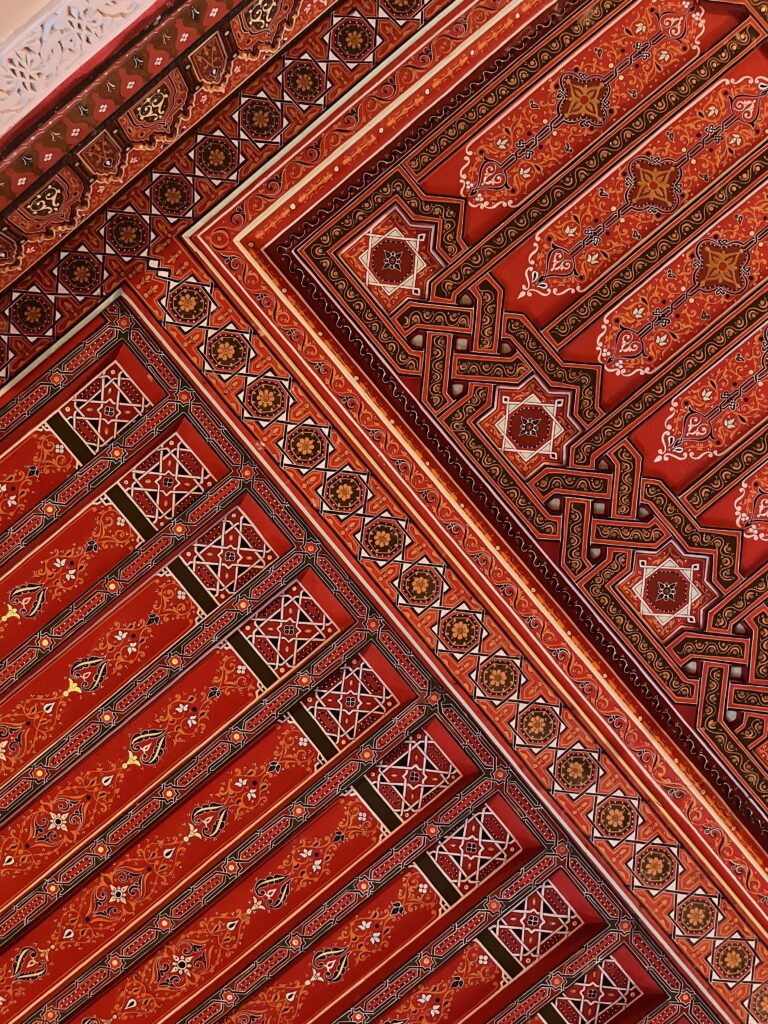
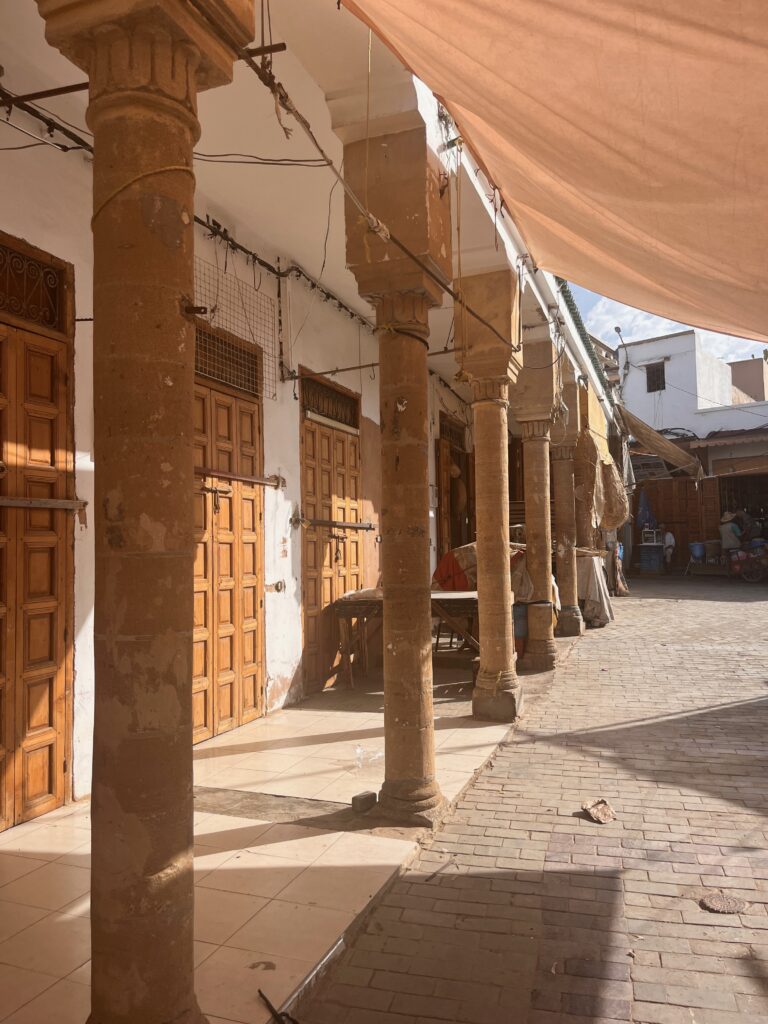
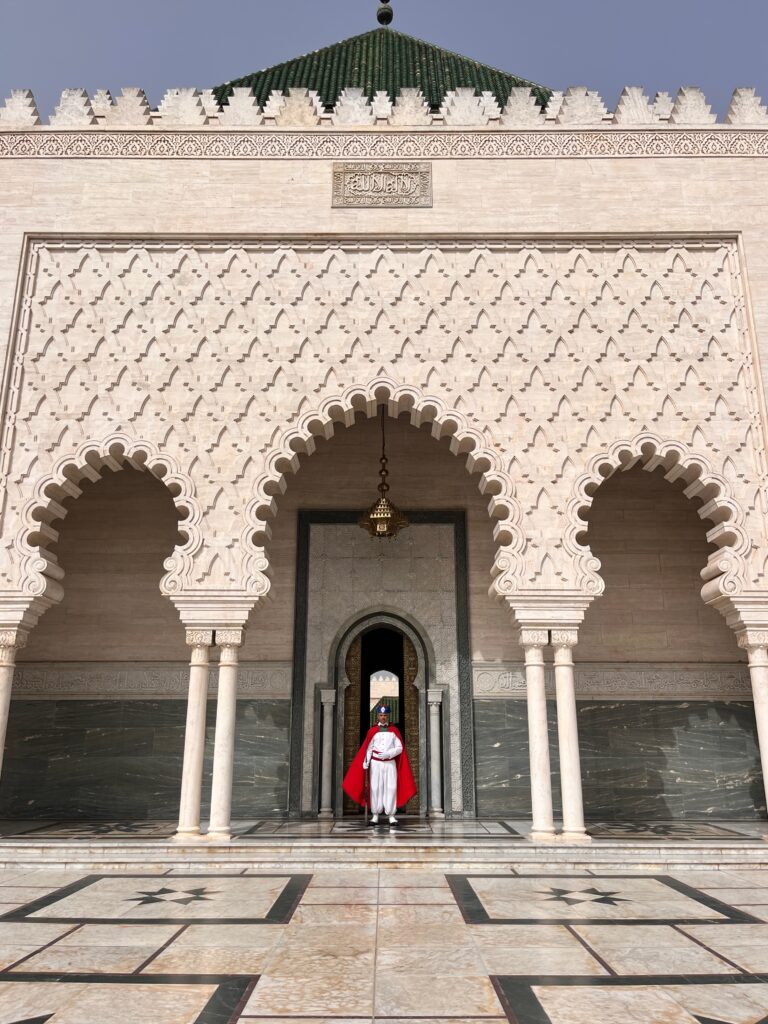
In Salé, I recommend getting lost in the historical medina. It had the most charm and lowest prices we encountered in the whole country so, if you are planning on buying leather goods or local clothing, this is the best place to do so. We loved the restaurant Ô Saveurs de la Médina, which had great views of the city.
In Rabat, you can visit the larger medina there, which is a bit more expensive but has more options. It also has plenty of modern restaurants and shops. The city of Rabat hosts the Hassan Tower, an iconic minaret of a grand mosque, standing at 44 meters tall, showcasing stunning Moorish architecture from the 12th century. It is free to visit and absolutely beautiful. If possible, I recommend also visiting the nearby historical site of Chellah, which was sadly closed when we visited because they were filming a movie there!
4. Chefchaouen and Akchour
Chefchaouen, known as the “Blue Pearl” of Morocco, is a picturesque town nestled in the Rif Mountains. Renowned for its striking blue-washed buildings and charming alleyways, Chefchaouen offers a serene escape with a blend of Andalusian and Moroccan influences. You can wander through its narrow streets, visit the vibrant markets, and explore the historic Kasbah. It is also famous for being weed-friendly – despite marijuana being illegal in the country, it is easy to find some on the streets Chefchaouen.
The town’s relaxed atmosphere, stunning mountain views, and unique architecture make it a favorite among photographers. I recommend exploring the less-frequented alleys of town to encounter the most authentic and breathtaking views of Chefchaouen, if possible in the morning before most tourists arrive. Some of my favourite streets for pictures were Rue Ibn Asskar and Derb Chabou, as well as the area close to Bab El Onsar.
Chefchaouen is also a great place to shop for souvenirs, with a plethora of local merchants selling handmade crafts such as dishes, carpets, leather goods, and clothing (see tips on negotiating in Morocco here). Shops on the most popular streets will sell many inauthentic products imported from abroad, but small shops off the beaten paths will offer the most wonderful of treasures… I found precious handmade lamps in a small shop next to Hostal Vallparadis (see picture below), which I highly recommend.
For food and rest, I recommend the restaurant Sofia and, for accommodation, the Hôtel Dar Chefchaouen and hostel Casa Amina. If you want to stay in the medina of Chefchaouen, note that cars are not allowed and it’s very steep (if you carry a large suitcase, it will be challenging). There is a paid parking outside of the medina.
The best strategy in Chefchaouen is to get lost in the maze of its Medina. You will encounter the most magical scenes and the greatest keepsakes.
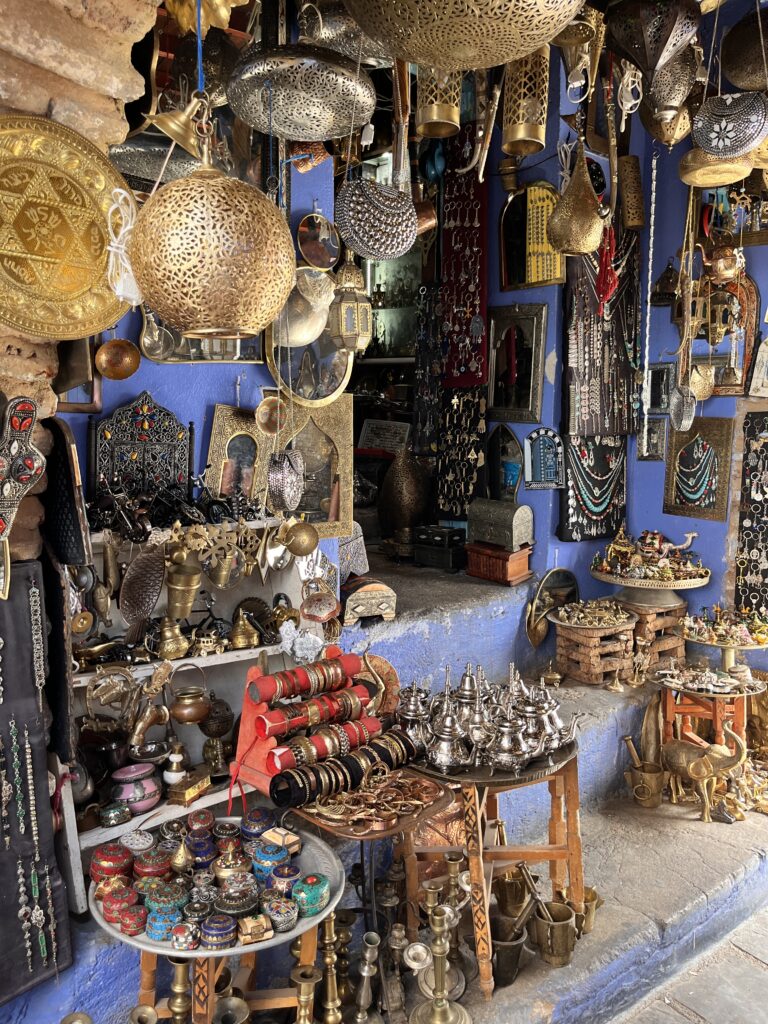
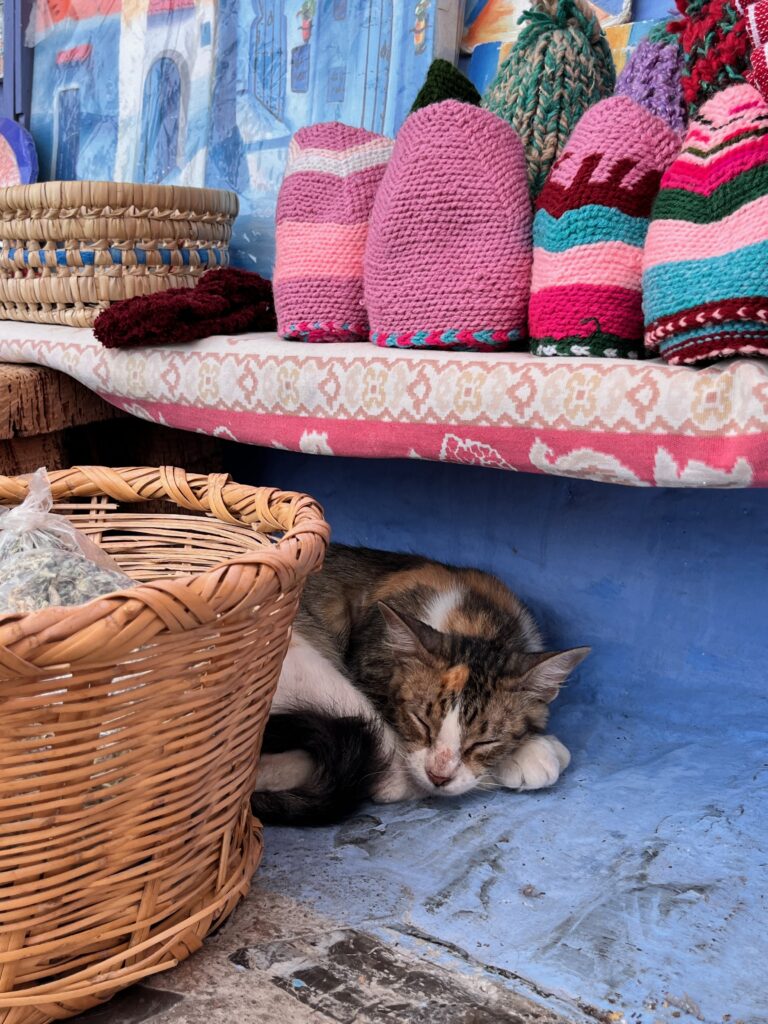
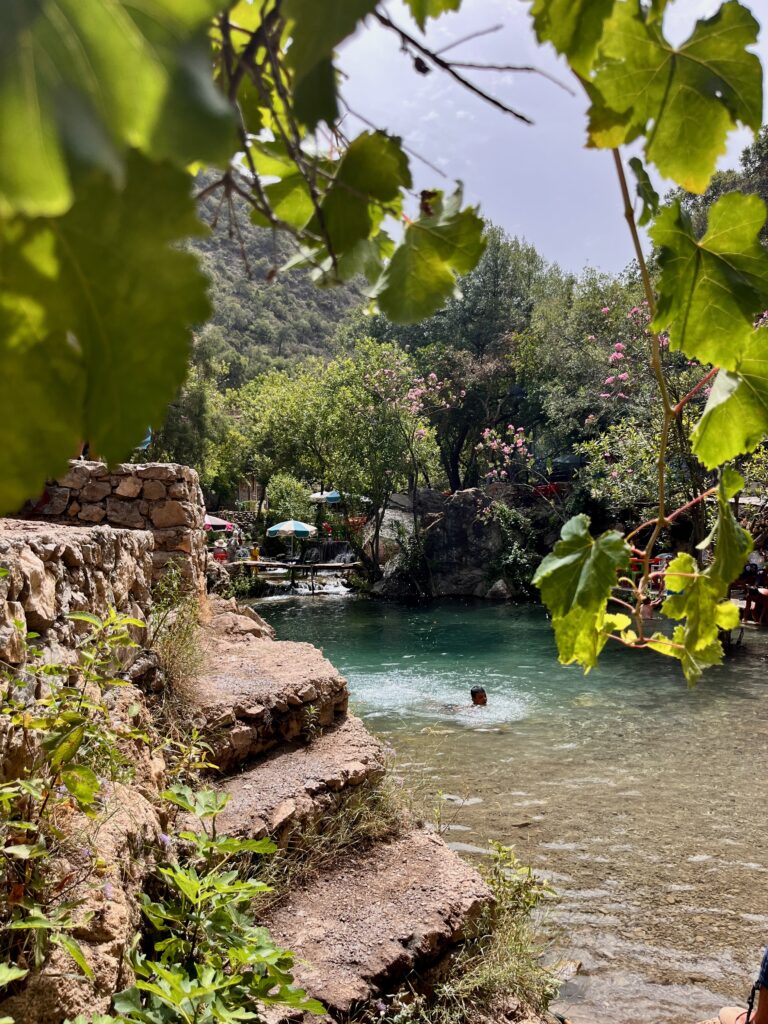
Just an hour away from Chefchaouen are the waterfalls of Akchour, located in the Rif Mountains. They are accessible from a hiking trail and it takes about 40 minutes to find the most beautiful natural pools. Known for their crystal-clear waters and green surroundings, the waterfalls of Akchour offer a refreshing retreat with lush vegetation and turquoise waters, a true oasis in the arid mountains of Morocco.
I recommend hiking through the scenic trails, stopping in multiple areas to explore the different waterfalls and pools, drinking tea and eating tajine prepared by locals, and simply enjoying the serene beauty of the cascading water. Along your path, you may find fresh wild mint. Take lots of breaks to avoid the heat taking over you. Make sure to pack a water bottle (which you can refill with the water from the river), a hat, sunscreen, and a swimsuit!
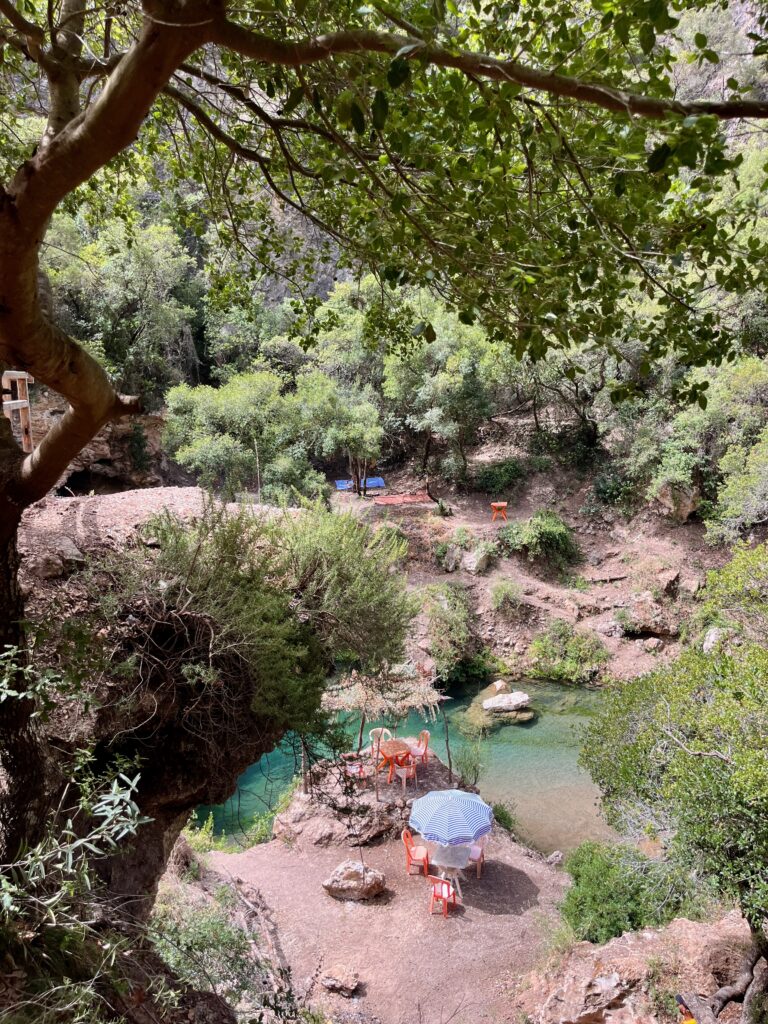
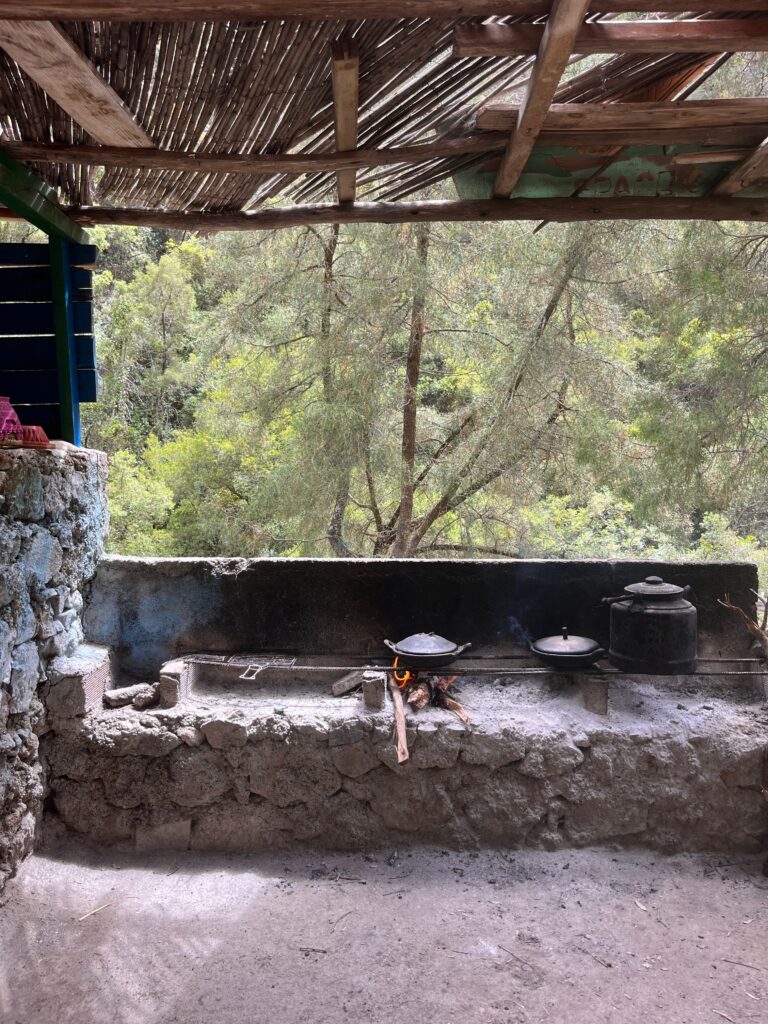
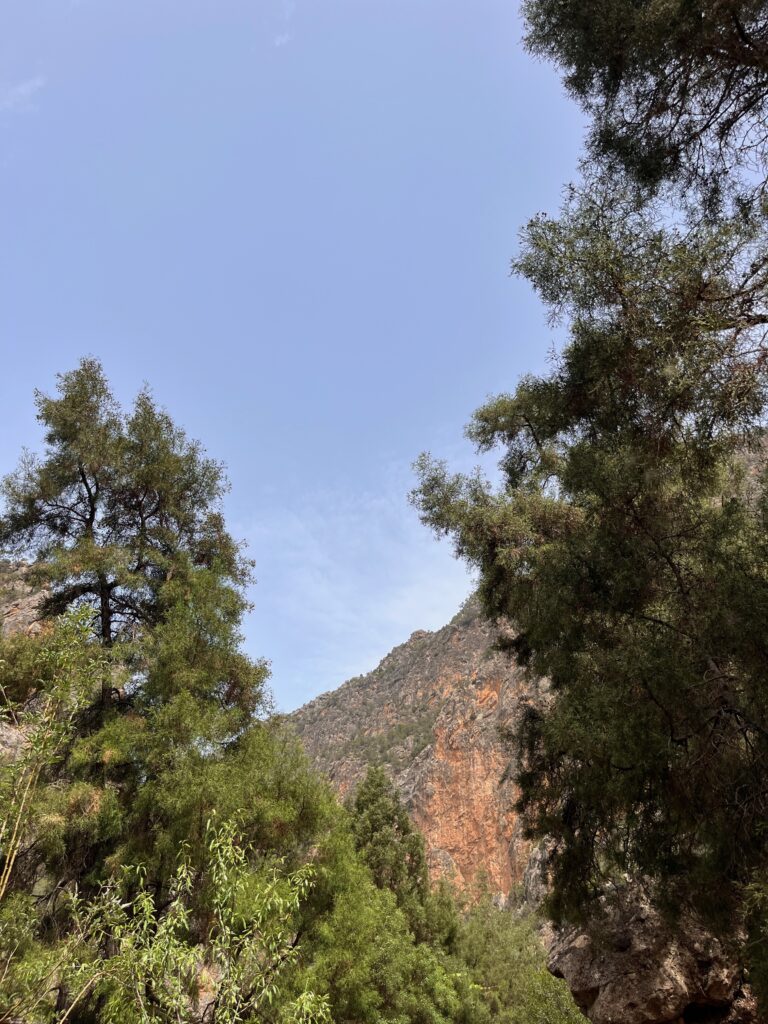
5. Fes and Volubilis
Fes, Morocco’s spiritual and cultural heart, is a city steeped in history and tradition. Renowned for its ancient medina, Fes el-Bali, a UNESCO World Heritage site, it boasts labyrinthine streets, vibrant souks, and stunning Islamic architecture.
Home to the world’s oldest university, Al-Qarawiyyin, and the stunning religious school of Al Attarine Madrasa, Fes is a treasure trove of knowledge and craftsmanship. Visitors can explore historic madrasas, bustling tanneries, and exquisite mosques, all while soaking in the city’s rich cultural heritage. With its blend of old-world charm and vibrant energy, Fes offers an unforgettable journey into Morocco’s past and present.
I highly recommend staying at the Riad Maison Bleue & Spa in Fes, which was the most stunning riad I’ve ever stayed at. See my complete guide of the best things to do in Fes, Morocco.
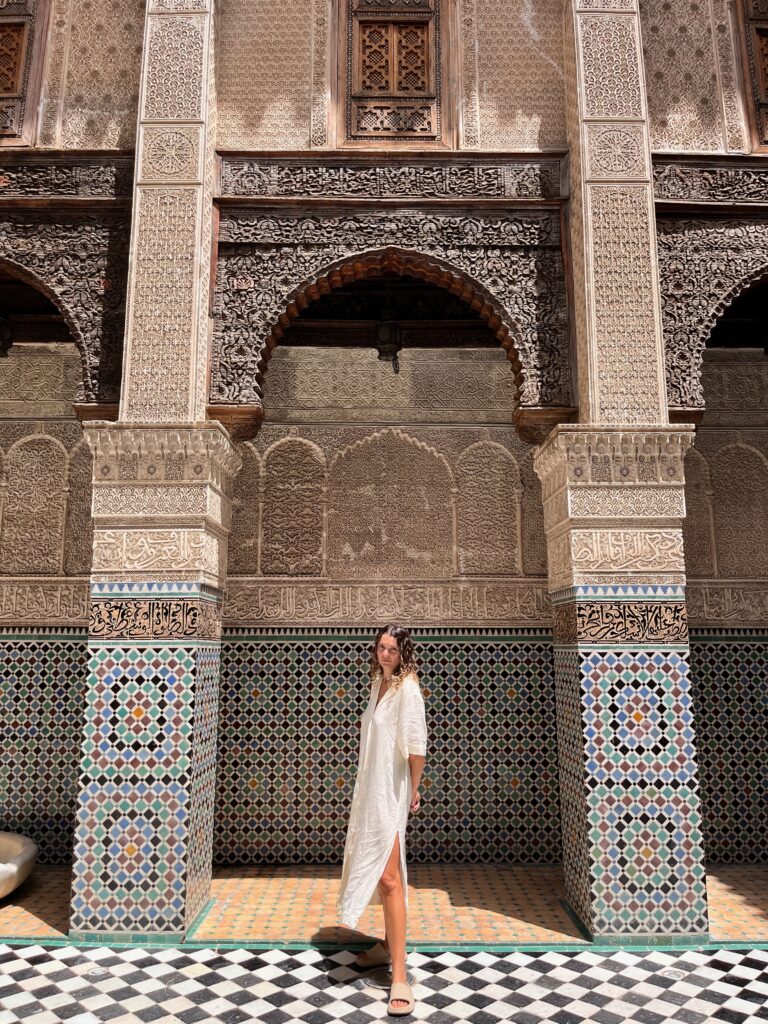
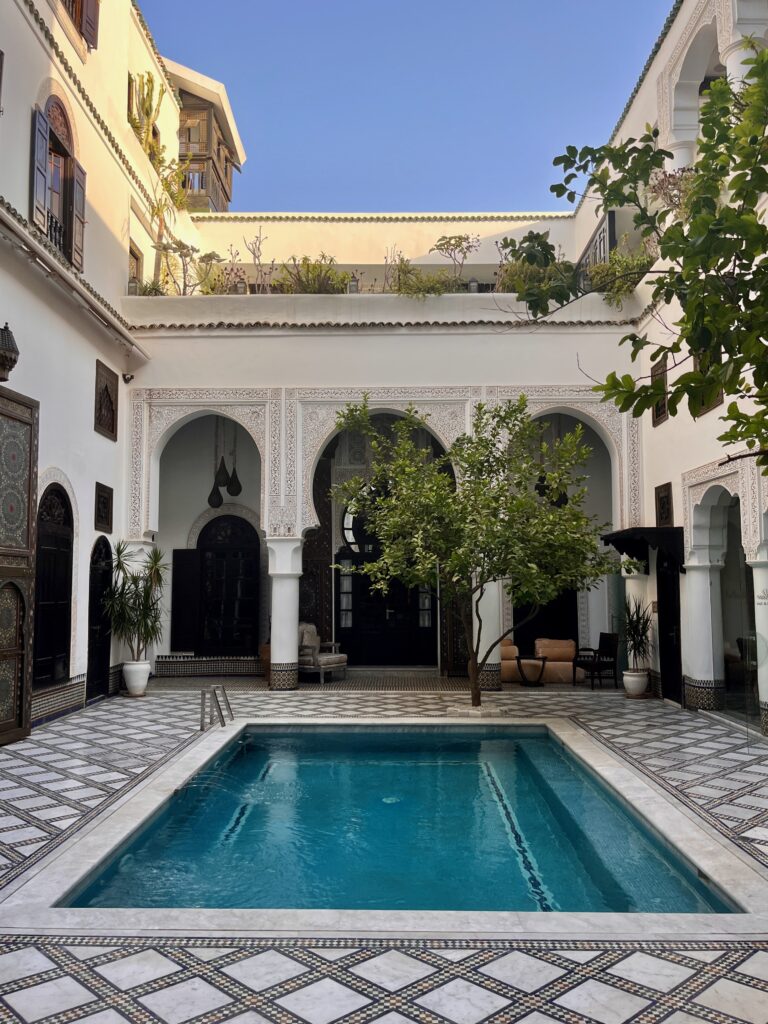
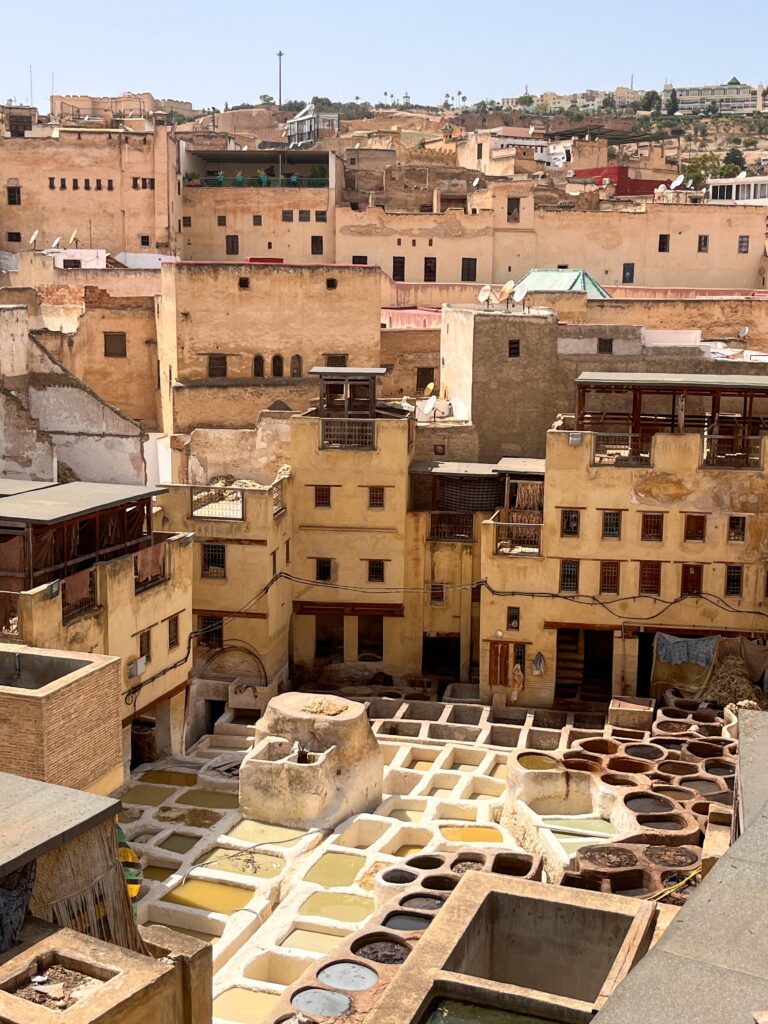
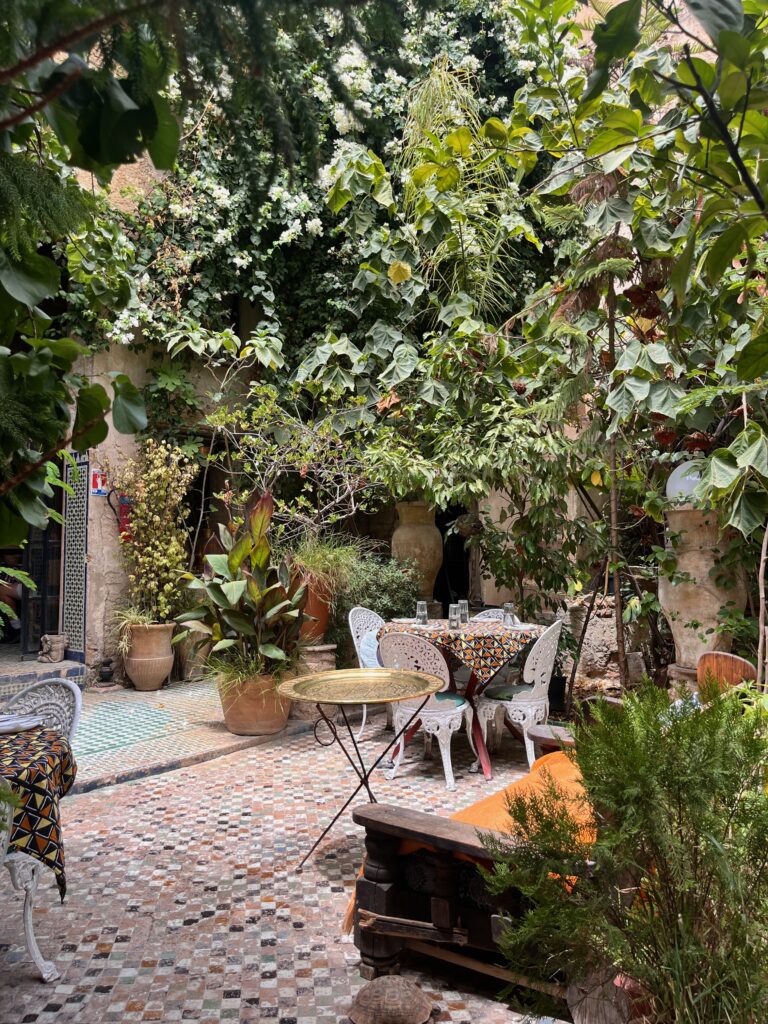
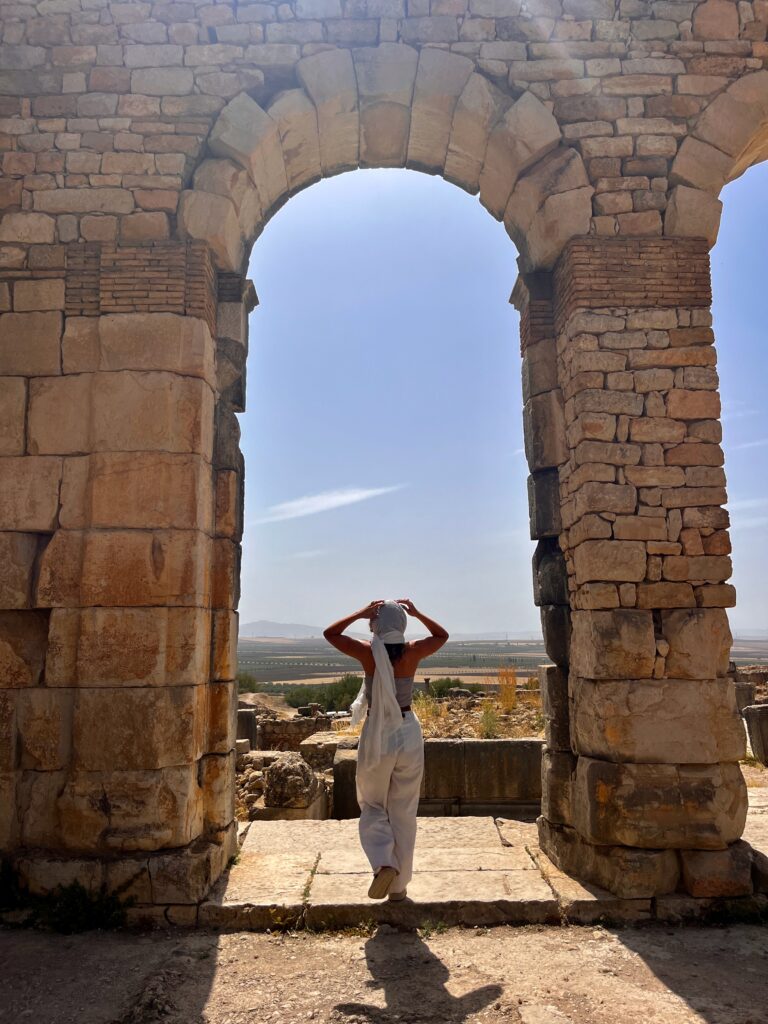
Just one hour away from Fes is Volubilis, a captivating historical city. It is a must-see if you are in the region and ended up being one of our favourite stops during our road trip in morocco. Volubilis is the perfect site for architecture and history enthusiasts and anyone seeking to explore the timeless beauty of archaeological treasures.
Volubilis consists of well-preserved Roman ruins, still standing exactly as they were hundreds of years ago. Once a thriving ancient settlement, Volubilis now stands as a testament to Roman engineering and culture, featuring impressive mosaics, grand arches, and majestic columns. This UNESCO World Heritage site offers a fascinating glimpse into Morocco’s rich past. Visitors can wander through the remnants of ancient temples, basilicas, and baths, all set against a backdrop of rolling hills and olive groves.
Conclusion
In conclusion, our road trip through Morocco revealed a treasure trove that offered a deeper connection to the country’s rich culture, history, and natural beauty. From the bustling streets of Rabat to the serene blue alleys of Chefchaouen, each stop left lasting impressions. The historical wonders of Volubilis, the enigmatic souk of Fes, and the unparalleled beauty of Akchour will forever remain in my memory, showcasing the diverse landscapes and vibrant traditions that make Morocco an enchanting travel destination.
This journey was a perfect blend of exploration and relaxation, allowing us to immerse ourselves in local life while uncovering hidden gems. Whether you are drawn to the ancient medinas, the majestic mountains, or the expansive deserts, Morocco offers something for every traveler. I hope this guide inspires you to embark on your own Moroccan adventure and discover the countless treasures waiting to be explored. Safe travels, and may your journey be filled with unforgettable moments and authentic encounters.
You can, of course, alter this itinerary based on your needs and wishes. You could add, for example, the cities of Ouarzazate, Essaouira, Tangier, and Agadir, as well as the marvellous Sahara Desert. If you have any questions or feedback, please don’t hesitate to get in touch!
Itinerary
You can freely save, edit, and download the following itinerary on Google Maps. It includes all stops, cultural and historical sites, restaurants, and hotels mentioned in this article.


